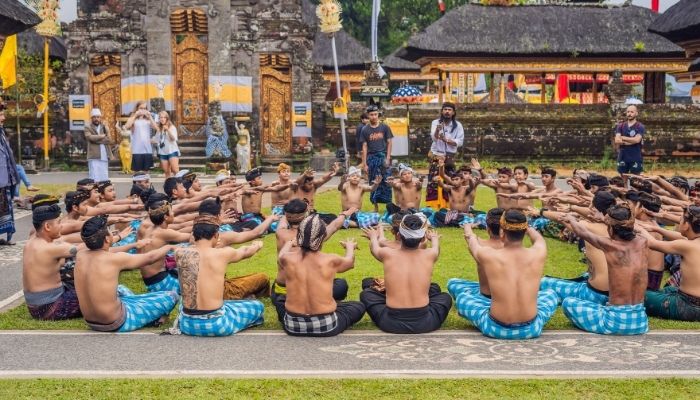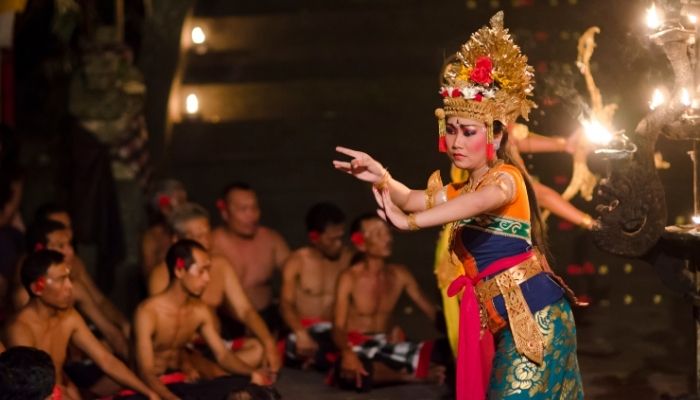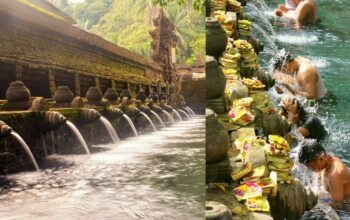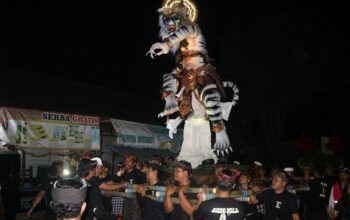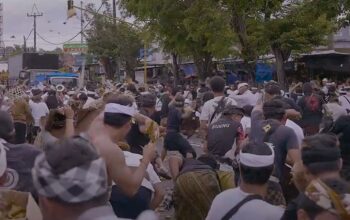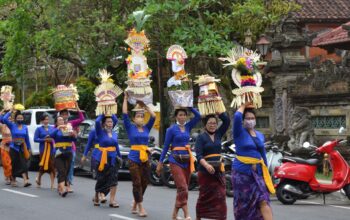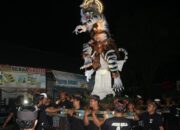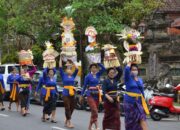Understanding Bali’s Kecak Dance
The Kecak Dance is one of Bali’s most famous art performances, captivating visitors from around the world. This dance is unique because it is not accompanied by traditional Balinese instruments like the gamelan, but by a chorus of dozens of men sitting in a circle, rhythmically chanting “cak.” Kecak is not only a visual and auditory spectacle but also presents a deep spiritual and mythological story from the Ramayana epic.
Kecak is often referred to as the “fire dance” because some performances involve spectacular fire scenes, particularly during the segment where Hanoman (the powerful white monkey character in the Ramayana) is trapped and burns himself to escape. The combination of epic storytelling, dramatic movements, and resonant chanting makes the Kecak Dance a moving and mesmerizing experience for its audience.
The Kecak Dance represents the rich spirituality and artistry of Balinese culture. Watching this performance firsthand is an unforgettable experience, especially when held at sunset in venues like Uluwatu, offering breathtaking ocean views.
The History of the Kecak Dance
The Kecak Dance originates from a religious ritual called “Sanghyang,” a sacred dance believed to ward off evil spirits and heal illnesses. In this ritual, dancers often enter a trance-like state, dancing under the influence of spiritual forces. This practice dates back to ancient times and was performed by Balinese communities as part of their worship of gods and ancestors.
In the early 20th century, around the 1930s, a Balinese artist named Wayan Limbak collaborated with Walter Spies, a German painter and musician residing in Bali. Together, they developed the Kecak performance into a public spectacle without losing its original spiritual and cultural essence. Elements of the Ramayana story were incorporated to provide a clear and engaging narrative.
Since then, the Kecak Dance has grown increasingly popular, not only among Balinese people but also worldwide. Many art groups and cultural communities in Bali continue to preserve and innovate the performance to keep it relevant and appealing to younger generations and international tourists.
The Uniqueness of the Kecak Dance
Unlike other traditional dances in Bali, the Kecak Dance uses no musical instruments. The rhythm and dynamics of the performance are built entirely from human voices, performed by dozens to hundreds of men sitting in a circle. They rhythmically chant “cak cak cak,” creating a powerful and captivating resonance.
These male dancers form a large circle that serves as a natural “stage” for the main characters such as Rama, Sita, Hanoman, Ravana, and Lakshmana. Their appearances are accompanied by dialogues, theatrical movements, and dramatic expressions portraying significant scenes from the Ramayana.
The strength of the Kecak Dance lies in its harmonization of movement, voice, and storytelling. There are no hidden musicians—every sound heard is the result of extraordinary coordination among the dancers. This creates a deeply immersive and engaging experience for the audience.
Moreover, the use of fire in some parts of the performance adds a dramatic touch. For instance, in the scene where Hanoman is set on fire, the blazing flames merge with the dancer’s movements, creating a magical and intense atmosphere. The audience will simultaneously feel both tension and awe.
Makeup and costumes also play a vital role in the performance. Ravana appears with a frightening face and grand robes, Hanoman is energetic and playful, Sita is portrayed as gentle and graceful, while Rama exudes authority. Every detail of the costumes and makeup reflects the character and nature of the portrayed figures.
Performance Venues, Schedule, and Ticket Prices
The Kecak Dance can be witnessed at various locations across Bali, ranging from traditional village stages to iconic venues that blend performances with natural scenery. Here are some of the best places to enjoy the Kecak performance:
1. Uluwatu Temple (Pura Luhur Uluwatu)
Uluwatu Temple is one of the most iconic places to experience the Kecak Dance. Located on a high cliff overlooking the Indian Ocean, it offers a dramatic and spiritual atmosphere. As evening approaches, the sky turns orange, the sun slowly sets, and the performance begins.
The open-air stage in Uluwatu can accommodate hundreds of spectators. A magical atmosphere is created as the dance takes place in an open circle without excessive artificial lighting. The sound of the ocean breeze, crashing waves, and the chanting dancers create a fusion of nature and art.
Besides the performance, visitors can enjoy the grand temple architecture and encounter wild monkeys, which are part of the unique experience here. However, visitors are advised to guard their belongings carefully as the monkeys are quite active.
Schedule: Daily at 6:00 PM local time, around sunset.
Ticket Price: Approximately IDR 150,000 – 200,000 per person.
Highlights: The dramatic cliffside views and sunset backdrop create a magical atmosphere. The sacred temple location also adds a profound spiritual dimension to the event.
2. Discovery Shopping Mall, Kuta
In contrast to the sacred ambiance of Uluwatu, the Kecak performance at Discovery Mall Kuta is more modern and accessible for casual tourists. The mall hosts performances in an open area with the famous Kuta Beach as the backdrop.
This show is ideal for families, tour groups, and those who may not have time to visit more distant cultural sites. Although the spiritual ambiance may not be as strong as at Uluwatu, the entertainment and cultural education value remain significant.
Discovery Mall often holds cultural promotion programs to attract visitors. In a more relaxed atmosphere, guests can enjoy the Kecak Dance while shopping or savoring Balinese cuisine at nearby restaurants.
Schedule: Several times a week, especially during holiday seasons or special events.
Ticket Price: Varies, often free as part of promotional events.
Highlights: Easily accessible for tourists in the Kuta area. The relaxed show atmosphere is family-friendly.
3. Batubulan and Bona Villages
Schedule: Daily or according to the local dance community’s schedule.
Ticket Price: Around IDR 75,000 – 120,000.
Highlights: Offers a more traditional atmosphere, closer to the local community.
Conclusion
The Kecak Dance is a masterpiece of Balinese performing arts that merges spirituality, mythology, and visual beauty into a captivating spectacle. From its sacred origins to becoming a world-class performance, Kecak reflects how local culture can evolve without losing its traditional roots.
Every Kecak performance venue in Bali offers its own distinct charm—whether it’s the natural power of Uluwatu, the modern convenience of Discovery Mall, or the intimate village atmosphere in Batubulan. No matter where you watch it, the performance will deepen your understanding of the soul and spirit of the Balinese people.
A trip to Bali would feel incomplete without witnessing the Kecak Dance. It’s not just an art performance, but a spiritual and cultural journey that will remain vivid in your memory long after your holiday ends.

